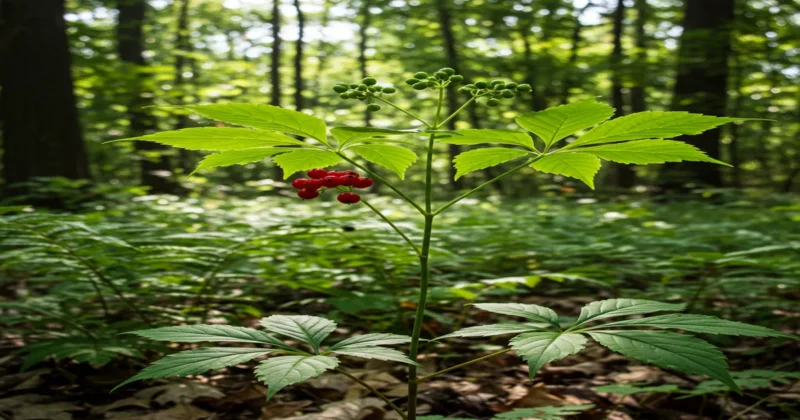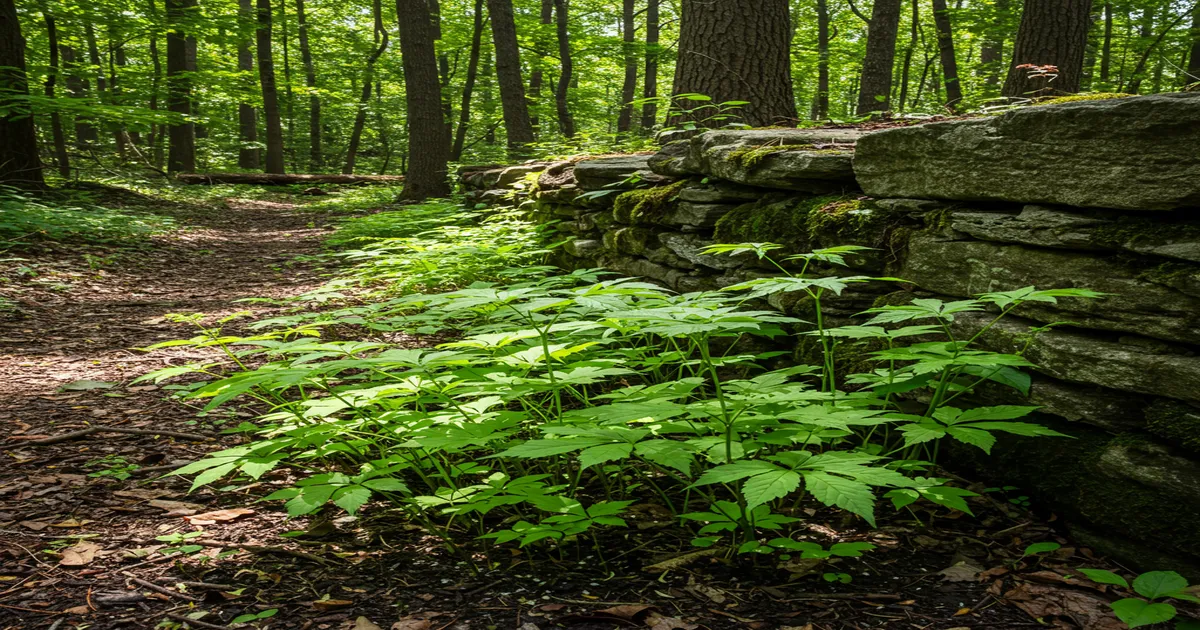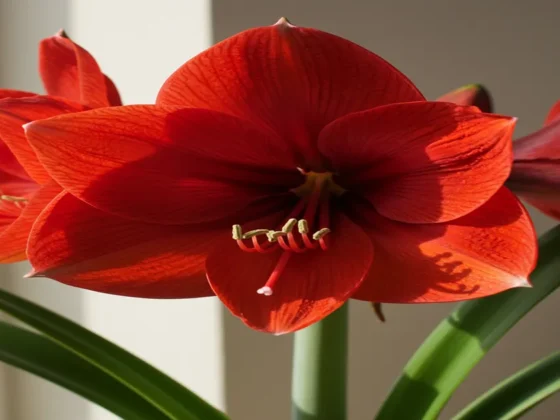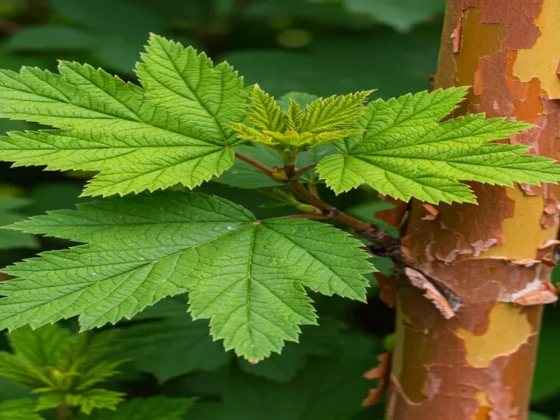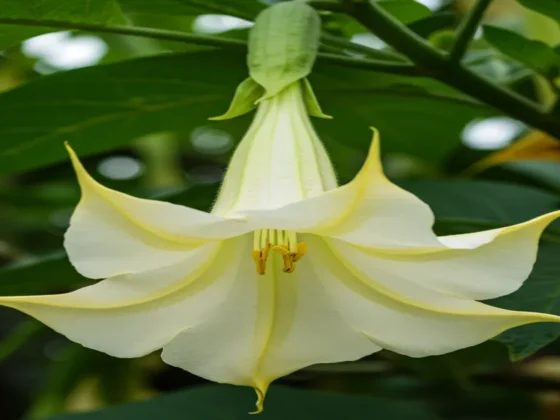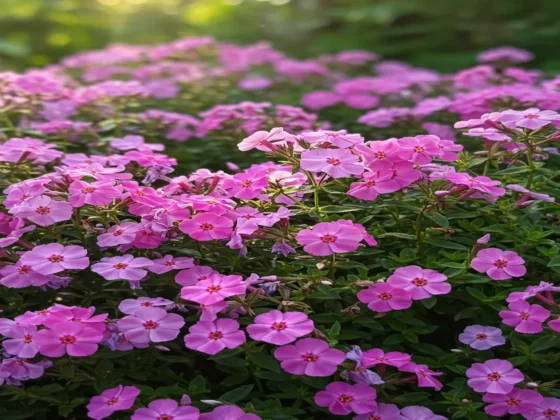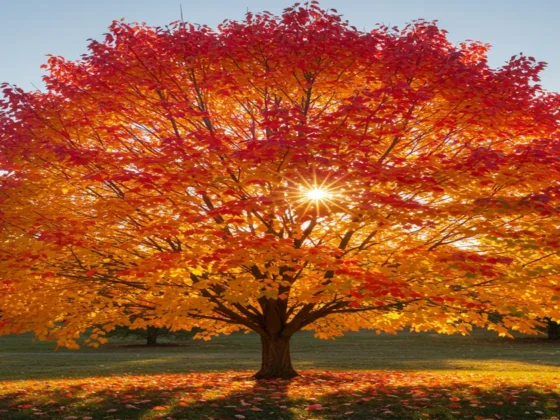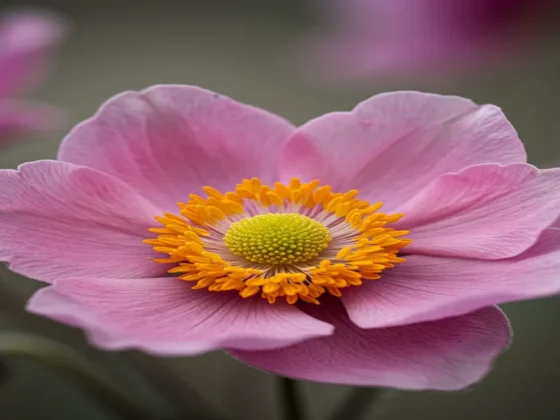Ginseng is a plant belonging to the Panax genus, and its fleshy roots have ties to some of the oldest medicinal practices worldwide. The majority of ginseng species originate from East Asia, with two native to North America. The plant features a single stem with palmate, serrated green leaves. Its small, umbel-shaped white or greenish flowers bloom in the inconspicuous yet fragrant spring or summer, followed by bright red berries.
Ginseng is typically planted in the fall or early winter and is known for its slow growth rate. Whether grown from seed or roots, it takes four to seven years for the roots to mature for harvesting.
| Common Name | Ginseng |
| Botanical Name | Panax spp. |
| Family | Araliaceae |
| Plant Type | Perennial, herb |
| Size | 8–24 in. tall, 8–12 in. wide |
| Sun Exposure | Partial sun, shade |
| Soil Type | Moist but well-drained |
| Soil pH | Acidic |
| Hardiness Zones | 3–7 (USDA) |
| Native Area | North America, Asia |
Planting Ginseng: A Step-by-Step Guide
Cultivating ginseng requires patience, but with proper care, it can thrive in a woodland environment.
Best Time for Planting
Ginseng, whether from roots or seeds, should be planted in late summer or early fall, just before the leaves drop and prior to the first frost.
When buying ginseng seeds, ensure they have been stratified for a full winter, shedding their outer layer to be ready for spring germination after planting.
Choosing the Right Planting Spot
Opt for a site with approximately 80% shade, preferably on northern or northeastern slopes to limit sun exposure.
The soil should be fertile, well-draining, rich in organic matter, and slightly acidic. Wooded areas with abundant leaf litter and quality topsoil are ideal, especially those where other herbaceous perennials like ferns, wild ginger, Jack-in-the-pulpit, and foamflower flourish.
Proper Spacing, Depth, and Support
Clear the planting site thoroughly before planting, removing not only weeds but also any underground obstacles like tree roots or rocks that could hinder root growth.
Ginseng rootlets are typically sold as two- or three-year-olds. Dig a hole 3 inches deep, place the rootlet horizontally with the growing bud facing up, just beneath the soil surface, covered with 1/2 inch of soil and leaf litter.
Space rootlets at least 12 inches apart in rows that are 6 to 12 inches apart.
Plant seeds ½ inch deep, spacing them 3 to
Care Tips for Ginseng Plants
Light Requirements
Ginseng should be grown in partial to full shade (75 to 80% shade) under a woodland canopy. Ideal trees for providing shade include black walnut, sugar maple, and tulip poplars.
Soil Conditions
Ginseng thrives in moist, well-drained, slightly acidic soil (pH between 5.0 and 6.5) containing ample organic matter and leaf litter.
Proper drainage is crucial. Areas prone to flooding are not suitable for ginseng cultivation. The plant will not thrive in heavily compacted or clay soil.
Watering
Ginseng grows best in consistently moist soil. The natural shady habitats of ginseng usually provide adequate moisture, so additional watering is generally unnecessary except during dry spells.
Temperature and Humidity Preferences
Ginseng flourishes in temperate climates. Extremely hot, arid, or excessively humid summers beyond USDA hardiness zone 7 are not conducive to ginseng cultivation.
Fertilization
When planted in nutrient-rich soil with abundant leaf litter, ginseng typically does not need fertilizer; in fact, using commercial fertilizers may negatively impact its growth.
Different Kinds of Ginseng
The four Panax species that are most commonly cultivated worldwide are:
- Korean ginseng (P. ginseng) is among the ginseng species that are frequently grown. It originates from the mountains of East Asia, and its wild populations are now safeguarded in China and Russia due to excessive harvesting. Korean ginseng is mainly cultivated in Korea and can reach a height of up to 24 inches. In traditional Chinese medicine, it is known as the “yang” side of ginseng due to its warming properties.
- American ginseng (P. quinquefolius) is shorter in stature compared to Korean ginseng, growing up to 18 inches tall. Its root resembles a branched parsnip or parsley root. Native to the forests of the eastern United States, American ginseng is classifi

ed as an endangered species due to overharvesting. In traditional Chinese medicine, American ginseng is associated with the “yin” side and has cooling effects.
- Vietnamese ginseng (P. vietnamensis) is a highly valued variety in herbal medicine that can grow up to 3 feet tall. Its roots are distinctive with notches, unlike other ginseng species.
- Chinese ginseng (P. notoginseng) is indigenous to the mountains of Southwest China and can reach a height of about 4 feet.
How to Harvest Ginseng
Ginseng is considered ready for harvesting when its taproot has developed three or four prongs. Harvesting at a younger age can prevent flowering and seed production, which typically occurs in plants that are at least three to four years old.
Carefully unearth the roots using a shovel or trowel, being cautious not to cause any damage during the process. To sustain the growth of your ginseng patch, consider planting stratified ginseng seeds in proximity.
Cleaning and Drying Process
Rinse the roots immediately after harvesting under cold running water. Gently rub (instead of scrubbing) to eliminate loose soil. Lay them on a screen to air dry for several hours, away from direct sunlight.
For drying purposes, you can utilize a dehumidifier, heater, wood stove, fan, or drying room. Maintain a stable air temperature ranging from 70°F to 100°F with adequate airflow around the roots during the drying period. It usually takes one to two weeks at a 70°F air temperature for the roots to dry completely.
While drying, the ginseng roots will shrink but may retain some sponginess until the drying is complete. A root is considered ready when it breaks easily into two pieces when dried. The interior of the root should be wholly white (absence of a brown ring, which could indicate mold presence).
Proper Storage of Ginseng
Store fresh ginseng in the refrigerator for a period of two to three weeks.
Dried ginseng, whether in root or powder form, should be kept in a dry, dark location in an airtight container like a glass jar. Properly stored, it can last up to five years.
How to Cultivate Ginseng in Containers
Growing ginseng in outdoor pots is feasible. Select a container that is at least 15 inches in diameter and has ample drainage holes. Fill it with well-draining, slightly acidic potting mix.
Remember that potted plants require more frequent watering compared to those planted in garden soil.
When cultivating outdoors, protect the roots from cold temperatures by winterizing the pots, either by burying them in the ground or placing them in an insulating structure.
Ginseng grows slowly, so repotting into a larger container one size up with fresh potting mix is necessary only every few years. If growth halts before outgrowing its current container, repot it in the same pot using new potting mix.
Trimming
Ginseng does not require pruning, except for eliminating the dead leaves in early spring to allow space for new growth.
Growing Ginseng
Ginseng can be grown from seeds or by transplanting rootlets from a nursery. Refer to the guidelines for Planting Ginseng provided above.
Wintering
During the winter, the ginseng plant enters a dormant state. While it can survive temperatures as low as -40°F, it is advisable to provide protection for its roots. To do this, cover the plant with a layer of mulch—4 inches thick in colder regions and at least 2 inches thick in milder areas.
Common Pests & Plant Diseases
Ginseng is generally free of pests, but slugs, deer, and other browsing animals may consume its foliage. It can also be affected by root-knot nematodes, which are microscopic worms.
Ginseng is prone to fungal diseases like Alternaria leaf blight, gray mold, anthracnose, and root rot. To prevent root rot, ensure well-draining soil and avoid overwatering. Remove infected plants to prevent the diseases from spreading.
FAQ
Is ginseng easy to grow?
Ginseng is a challenging plant to cultivate, requiring a great deal of patience. Many individuals opt to purchase fresh ginseng from experienced growers rather than growing it themselves.
Can you grow ginseng indoors?
Ginseng is typically challenging to grow, so it is best to plant it outdoors in its natural habitat. When grown indoors, the plant may struggle to thrive.
Is it illegal to harvest wild ginseng?
Harvesting American ginseng on most state lands and National Park Service lands is illegal, even for personal use.
What’s the difference between white and red ginseng?
White ginseng is fresh ginseng that has been peeled and dried without heat. Red ginseng is steamed and dried, resulting in a reddish color. Red ginseng is less susceptible to decay.


